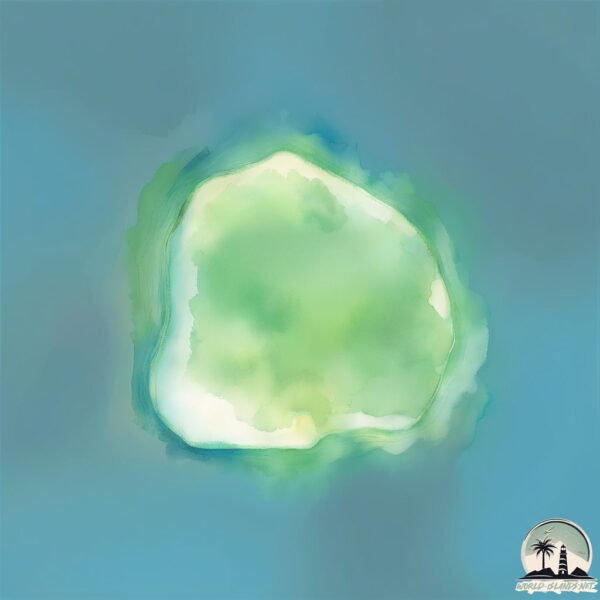Pulau Tepi

Welcome to Pulau Tepi, a Tropical island in the Indian Ocean, part of the majestic Indian Ocean. This guide offers a comprehensive overview of what makes Pulau Tepi unique – from its geography and climate to its population, infrastructure, and beyond. Dive into the details:
- Geography and Size: Explore the island’s size and location.
- Climate and Weather: Weather patterns and temperature.
- Topography and Nature: Uncover the natural wonders of the island.
- Infrastructure and Travelling: Insights on reaching, staying, and making the most of your visit.
- News and Headlines: Latest News.
Geography and size of Pulau Tepi
Size: 0.286 km²
Coastline: 2 km
Ocean: Indian Ocean
Sea: Indian Ocean
Continent: Asia
Pulau Tepi is a Tiny Island spanning 0.286 km² with a coastline of 2 km.
Archipel: Malay Archipelago – The world’s largest archipelago, located between mainland Southeast Asia and Australia, known for its immense biodiversity and cultural diversity.
Tectonic Plate: Burma – Also known as the Burma Plate, it’s a minor tectonic plate in Southeast Asia, largely covering Burma (Myanmar) and parts of the Indian Ocean. It’s involved in the subduction process under the Eurasian Plate, contributing to seismic activity in the region.
The geographic heart of the island is pinpointed at these coordinates:
Latitude: 2.89252115 / Longitude: 95.76103025
Climate and weather of Pulau Tepi
Climate Zone: Tropical
Climate Details: Tropical Rainforest Climate
Temperature: Hot
Climate Characteristics: This climate is typified by heavy rainfall throughout the year, high humidity, and consistently high temperatures, leading to lush rainforests and rich biodiversity. Seasonal temperature variations are minimal.
Topography and nature of Pulau Tepi
Timezone: UTC+07:00
Timezone places: Asia/Jakarta
Max. Elevation: 2 m
Mean Elevation: 1 m
Vegetation: Mangrove Forest
Tree Coverage: 100%
The mean elevation is 1 m. The highest elevation on the island reaches approximately 2 meters above sea level. The island is characterized by Plains: Flat, low-lying lands characterized by a maximum elevation of up to 200 meters. On islands, plains are typically coastal lowlands or central flat areas.
Dominating Vegetation: Mangrove Forest
Found in coastal areas and river deltas, these unique wetland ecosystems are adapted to saline conditions and are crucial for coastal protection and biodiversity. Pulau Tepi has a tree cover of 100 %.
Vegetation: 2 vegetation zones – Low Diversity Island
Islands with two distinct vegetation zones offer slightly more ecological variety. These zones could be due to differences in elevation, moisture, or other environmental factors. While still limited in biodiversity, these islands may offer a contrast between the two zones, such as a coastline with mangroves and an inland area with grassland.
Infrastructure and Travelling to Pulau Tepi
Does the island have a public airport? no.
There is no public and scheduled airport on Pulau Tepi. The nearest airport is Lasikin Airport, located 82 km away.
Does the island have a major port? no.
There are no major ports on Pulau Tepi. The closest major port is BLANGLANCANG, approximately 299 km away.
The mean population of Pulau Tepi is 60 per km². Pulau Tepi is Gently Populated. The island belongs to Indonesia.
Continuing your journey, Simeulue is the next notable island, situated merely km away.
Misteri Bulu Mengapung di Tepi Pantai | Cara Membuka Map Tecoloapan Bay Island【Genshin Impact】



Indonesia is classified as Emerging region: MIKT: Mexico, Indonesia, South Korea, and Turkey – Economies recognized for their development potential and emerging market status. The level of income is Lower middle income.
News – Latest Updates and Headlines from Pulau Tepi
Stay informed with the most recent news and important headlines from Pulau Tepi. Here’s a roundup of the latest developments.
Please note: The data used here has been primarily extracted from satellite readings. Deviations from exact values may occur, particularly regarding the height of elevations and population density. Land area and coastline measurements refer to average values at mean high tide.
